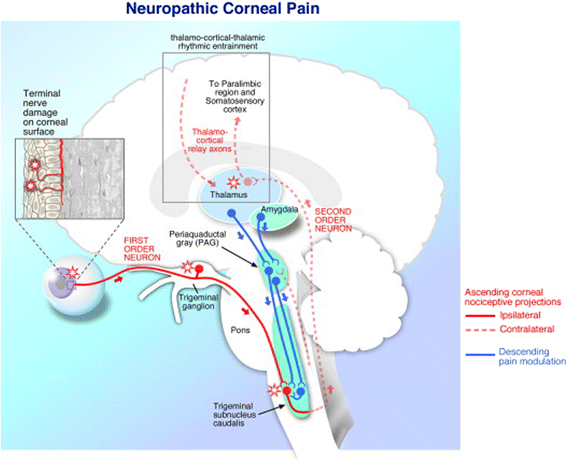Chronic dry eye symptoms after LASIK: parallels and lessons to be learned from other persistent post-operative pain disorders
- PMID: 25896684
- PMCID: PMC4411662
- DOI: 10.1186/s12990-015-0020-7
Chronic dry eye symptoms after LASIK: parallels and lessons to be learned from other persistent post-operative pain disorders
Abstract
Laser in-situ keratomileusis (LASIK) is a commonly performed surgical procedure used to correct refractive error. LASIK surgery involves cutting a corneal flap and ablating the stroma underneath, with known damage to corneal nerves. Despite this, the epidemiology of persistent pain and other long-term outcomes after LASIK surgery are not well understood. Available data suggest that approximately 20-55% of patients report persistent eye symptoms (generally regarded as at least 6 months post-operation) after LASIK surgery. While it was initially believed that these symptoms were caused by ocular surface dryness, and referred to as "dry eye," it is now increasingly understood that corneal nerve damage produced by LASIK surgery resembles the pathologic neuroplasticity associated with other forms of persistent post-operative pain. In susceptible patients, these neuropathological changes, including peripheral sensitization, central sensitization, and altered descending modulation, may underlie certain persistent dry eye symptoms after LASIK surgery. This review will focus on the known epidemiology of symptoms after LASIK and discuss mechanisms of persistent post-op pain due to nerve injury that may be relevant to these patients. Potential preventative and treatment options based on approaches used for other forms of persistent post-op pain and their application to LASIK patients are also discussed. Finally, the concept of genetic susceptibility to post-LASIK ocular surface pain is presented.
Figures

References
-
- Number of LASIK surgeries in the United States from 1996 to 2014 (in 1,000s). Sources: Market Scope; VSDAR c Statica 2015. http://www.statista.com/statistics/271478/number-of-lasik-surgeries-in-t.... Accessed Januray 7.
-
- Zalentein WN, Tervo TM, Holopainen JM. Seven-year follow-up of LASIK for myopia. J Refract Surg. 2009;25(3):312–8. - PubMed
Publication types
MeSH terms
Grants and funding
LinkOut - more resources
Full Text Sources
Other Literature Sources
Medical
Miscellaneous

